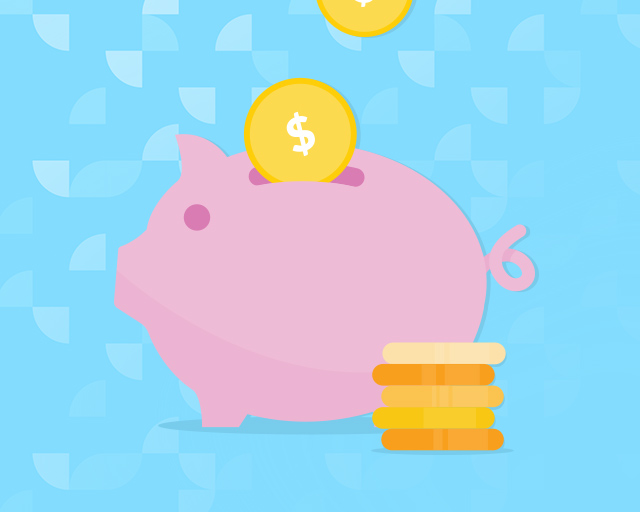

a budget can improve your relationship with your money
Budgets are boring. Budgets are annoying. Budgets are like stubbing your toe on purpose.
We get it.
When you work hard for your money, the last thing you want is a budget telling you how you can spend it.
What if a budget could help you save money? Get out of debt? Start and reach financial goals? In other words, what if it could improve your relationship with money? You’d want to learn more about budgets, right?

budget basics
A budget is a plan for what you’ll do with your money every month. It shows how much goes to expenses like rent, utilities, internet service and cell phone bills.
A budget also shows how much goes to debt you may have, like credit cards and car payments.
And it shows how much goes into your savings account.
A budget helps you decide how you’ll spend your money before you spend it.
That’s right, before your paycheck comes in, you already know where it’s going. By having a budget, you’re taking control of your money.
Read on to learn about the benefits of having a budget.
budget benefits
Making a budget and following it has many benefits. In the long run, a budget can help you:
save money
Long-term savings goals are an important part of a personal budget. Think about setting aside money each month to save for retirement, a vacation or a home down payment. In the short term, make sure to save enough for an emergency fund. A budget can give you better control over how you spend your money, allowing you to cut back on spending and save more.
get out of debt
Making a budget is about taking control of your finances. If you’re working to get out of debt, you can put some of your spending toward paying more on debt. For example, if you notice that you spend a lot on entertainment, you can change your budget to only spend a certain amount on it. Then use the difference to pay down debt.
start and reach financial goals
You likely have financial goals you’re working toward. Without a budget, it’s tough to focus your efforts so you can make progress. A budget can help you decide how much money to allocate for each goal and keep yourself accountable.1
live within your means
If you haven’t been budgeting, you may often wonder at the end of the month where all your money went. You could even be spending more than you make and using credit cards to make up the difference. A budget can help you live within your means if you use it to set clear boundaries for spending.
Now you know what a budget is and some benefits of having one. In the next section, we’ll show you how to get started on yours.
getting started
You’ll want to set aside time to work on your budget. Be sure to include your partner or spouse. Budgets work best when everyone is on board.
What should you use to create your budget? A pencil and a piece of paper works if you’re just getting started. If your computer has a spreadsheet program, you can use that too.
The most important thing is to get started, so use whatever makes you the most comfortable. You can always change it later.
Here are the steps to creating a basic budget:
step 1 – figure out your monthly income
This will include your paychecks plus child support and any other supplemental money you receive.
This will be easy if your pay doesn’t change much from month to month. If your income stays the same each month, simply take a look at your last paycheck. If you get paid monthly, use that number. If you’re paid every two weeks, multiply your net pay by two.
If your pay isn’t regular, consider taking the past three to six months and averaging what you earned during that time.
If you know you’ll earn at least a certain amount each month, use that and then make adjustments each month if your income goes up.
Oh, and remember to use your take-home or net pay instead of your gross income.1
Add everything together and move on to the next step.
step 2 – calculate your monthly expenses
Use your bank and credit card statements from the past three to six months to get an idea of what you typically spend each month.
Break your expenses down into these five categories:
Fixed necessities
These could include your rent or mortgage payment, childcare, cell phone bill, car payment and cable service. They’ll usually be around the same amount every month.
Variable necessities
You have these expenses every month, but the amount may change from month-to-month. Variable expenses can include food, utilities and gasoline.
Discretionary (fun) items
These are the fun expenses, like entertainment, eating out and gym memberships. Do you get coffee every day on the way to work? That counts too.
Debt
Credit cards, personal loans and credit accounts fall in this category. These could be considered fixed or variable payments but separating them helps later if you want to focus on one of them.
Savings
If you aren’t already saving for an emergency fund or a future purchase, include a small amount in your budget anyway. It’s a great way to get started.
Add up the five categories and move on to Step 3.
step 3 – subtract your expenses from your income
If you get a number higher than zero, you’re making more than you’re spending. Now’s a good time to decide what to do with that extra money. Can you put more in savings? Maybe you want to work on paying down your debt? It’s up to you.
If the number is less than zero, go back and look at your expenses. Is there anything you can cut back on to save money? Try to get your final number above zero so you can dedicate a small amount to savings.
You now have a good idea where your finances stand and a basic budget to use. Want to try a different type of budget? Check out the next section for a quick description of two popular budget methods.
popular budget methods
the 50-30-20 budget
With this plan, your take-home pay will be allocated like this:
50% for necessities like your rent or mortgage, groceries, utilities and credit account minimum payments
30% or less for discretionary or fun spending like eating out, streaming services and gym memberships
20% or more for savings: retirement, emergencies and goals, like buying a home. Plus, debt payments above minimum payments. 2
the zero-based budget
The idea behind this plan is that when you subtract your expenses from your income, you get zero. You get this by assigning a job to every dollar you earn.
The level of detail gives you an incredible view of where your money is going. Also, having more information allows you to make better decisions about managing your money.3
You can learn more about these two budget plans in this article.
track your progress
At the end of every month, compare your expenses against your budget. How did you do?
If you go over budget, it doesn’t mean you failed. Maybe your electric bill was higher than you expected. If so, adjust your budget for next month.
Yes, we’re saying the first budget you make doesn’t have to be the one you use forever.
Remember, deciding to follow a budget is one of the most important things you can do to work on your finances.
It can be hard at first, and it might take you a few months to get the hang of it. Don’t give up. It’ll be worth it.








